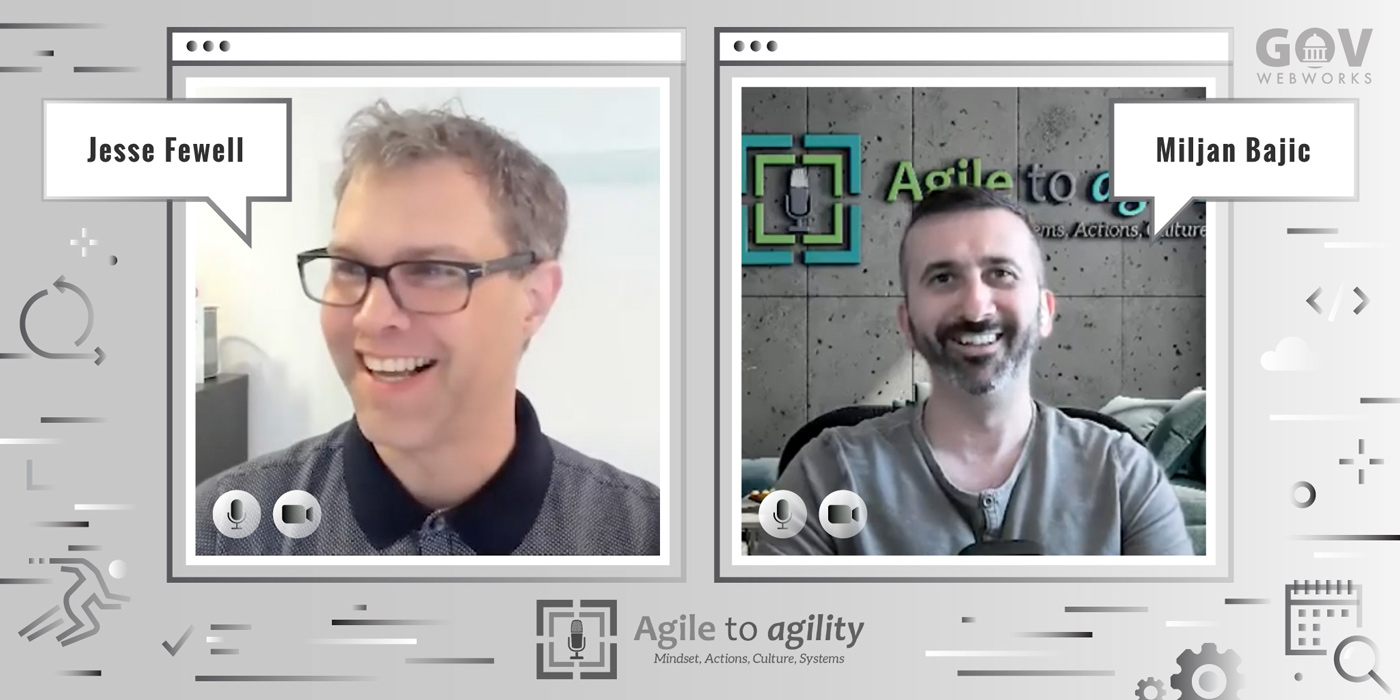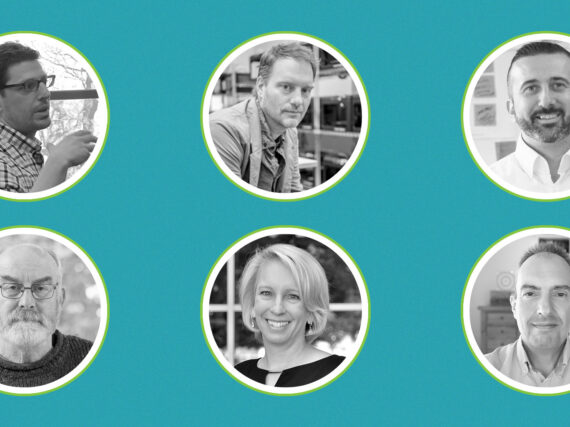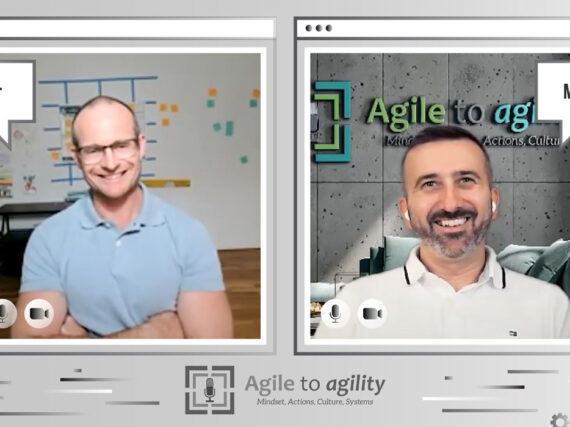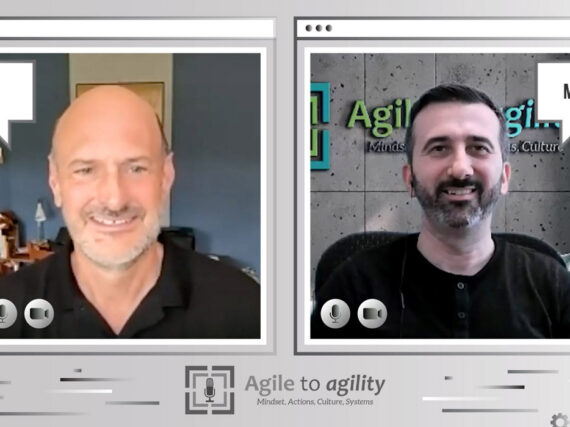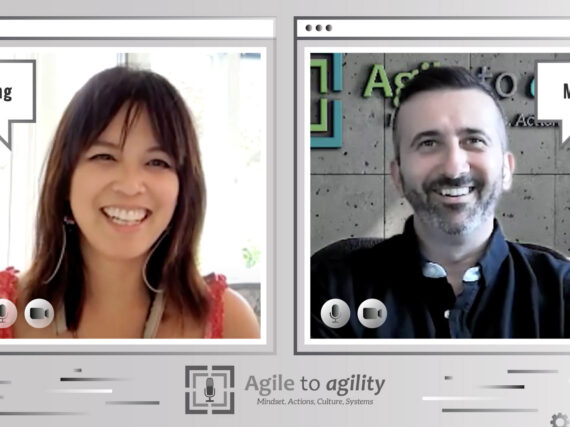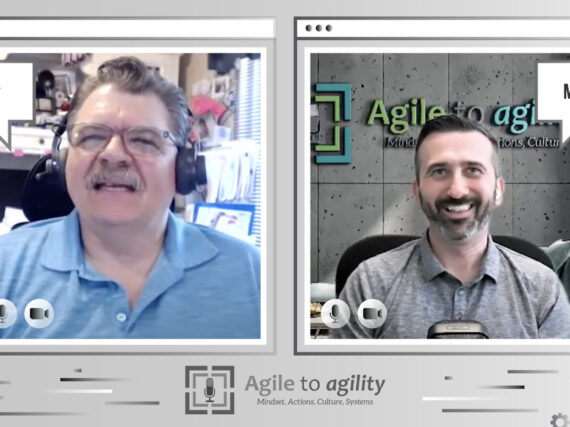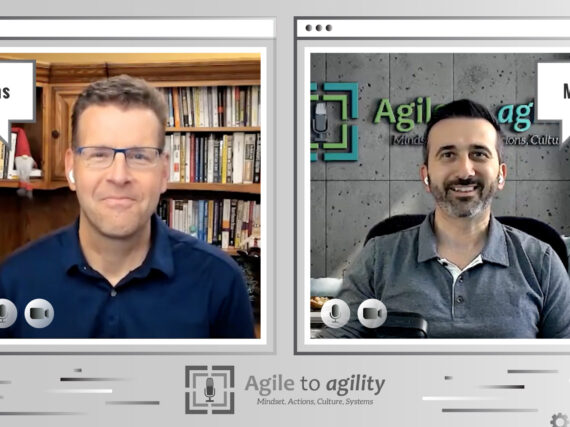In his book, Untapped Agility: Seven Leadership Moves to Take your Transformation to the Next Level, Jesse Fewell (that’s pronounced fuel) assures leaders that when an Agile transformation feels like a failure, don’t worry, that’s normal. “If you are not running into issues,” he says in a podcast about the book from PMO Strategies, “you are probably not having any impact.”
An author, coach, and trainer who helps senior leaders transform their organizations, Fewell outlines three key steps to expect in any Agile transformation journey. First comes “the boost,” which is the result of the initial gains from logical first steps. Next comes “the barrier,” or the unavoidable roadblock that makes the transformation feel like a failure. At this point, leaders should not despair, but look for “the rebound,” which is the way forward by leaning into the concept of the original boost.
In our latest edition of Agile to Agility Highlights, Miljan Bajic and Fewell talk about how coaches and leaders can optimize the Agile transformation process.
What is the goal of your book Untapped Agility?
Leadership is about directing attention. We are in the 20th anniversary of the Agile movement, and one of the patterns that shows up over and over is Agile sectarianism. We throw judgement bombs at each other over whether transformation should be about the mindset or the methods.
The point in the book is that if you want to have a successful transformation, you have to address the contextual methods and practices, and you need to operationalize your mindset.
How do you get people on the same page about mindset?
Coaching is leadership. Effective leadership involves coaching, but the nuance is where do you begin, where is your starting point? Leadership is being authentic to who you are, and sensitive to the people around you.
As the leader, I assert the singular core value that I believe in and emphasize, but then I include the unique elements that other people are bringing in. As a coach I can defer to the dominant culture, but insert new information into the culture.
What inspires you most about coaching?
Where I’m wanting to move more of my life’s work is helping regular every day professionals break through their limitations for greater impact. What gets me fired up is when every day people are overcoming the perceived constraints of their environment. Instead of saying: “I don’t have a fancy title, I don’t have the big budget, I don’t have the certifications, so I couldn’t possibly start coaching my boss to be a more effective leader”…Why not facilitate a dialogue across multiple departments about what a non-burn out culture might look like? That gets me fired up, seeing people breaking the rules of the conventional.
What is the myth of the agile coach?
The myth is that an Agile transformation is directly contingent upon the effectiveness of an Agile coach. I have found that to be completely untrue, unrelated, not even an issue. As an Agile coach, you can help, but you are not the thing.
There’s a little bit of ego and guilt that floats around…they are going to screw it up if I’m not doing the right thing or if I’m not there. Actually they are probably going to screw it up anyways. It doesn’t matter if you bring in Tony Robbins and make everyone cry, as soon as the meeting’s over, the next day they go back to old habits. It’s just the nature of the journey. So that is the myth of the Agile coach, you are not the critical lynchpin that you may have lead yourself to believe you are. So lay off the guilt and swallow your ego.
In order to build a better work environment, we have to empower the people who are innovating and creating completely new techniques and practices. But there are still the people who just need a baseline, who say, “Just tell me what the Scrum rules are.”
If we are going to be helpful, we need to be helpful to everyone where they are, rather than being agitated and frustrated about where they should be. It’s often about confronting your own ego so you can get out of your own way and bring your best wholistic self to the work that you do, instead of always second guessing yourself, or chasing after somebody’s else’s dream for success.
What do you see as the role of the agile coach?
This brings to mind the English story of Nanny Mcphee. She says, “When you want me to leave, that is when I will stay. When you want me to stay, that’s when it’s time for me to leave.” There comes a time when hopefully you outgrow your mentor. And that’s a good thing if you are able to be a catalyst for someone to be even more effective.
Is there a model you follow?
When Laloux’s book, Reinventing Organizations, first came out I thought it was utterly judgmental, categorizing people on levels. Like “maybe someday you will evolve your consciousness to a higher level and be as awesome as we are.” There are a lot of people that latched on to that and wanted people to jump four or five levels right away, otherwise you are not Agile.
We want to get to the Ben & Jerry’s culture right away, we don’t want to have to go through all this other stuff. I had to grow into not just a cognitive understanding of this, but emotionally tolerating the idea that there is a predictable, sequential journey.
The Agile Fluency Project asks which of these five cultures best describes yours, and for that culture, here’s the next level of agility you can pursue.
If you don’t tell people that something sucks, you are going to lose trust. But in some cultures, it’s unacceptable or rude to do that. How do you deal with this?
Pete Behrens comes in and says “Here’s what’s going on in the industry, and by the way, you are not that.” He has a way of doing this. I tend to want to emphasize and encourage, my assertive energy is 90 percent inspiration, rather than challenging. This represents a growth area for all of us. If you have an assertive bias, how can you grow a skill set to be accommodating in the right times, but still be yourself?
You don’t want to be contrived or fake, you have to be yourself, but within boundaries. You don’t want to tell your darkest secrets, but you need to share opinions, and step outside of your comfort zone and be more forceful with truth, then shift gears if people need more encouragement.
Learn more
- Contact GovWebworks to learn more about implementing Agile practices for a project or team
Listen to the podcast:
- Jesse Fewell: Untapped Agility, Cooks vs. Chefs, Change, Agile to Agility with Miljan Bajic
Read the book:
- Untapped Agility: Seven Leadership Moves to Take Your Transformation to the Next Level, by Jesse Fewell, free book excerpts, templates, and videos
Get coaching:
- Book a coaching session with Jesse Fewell at agilevictory.com
